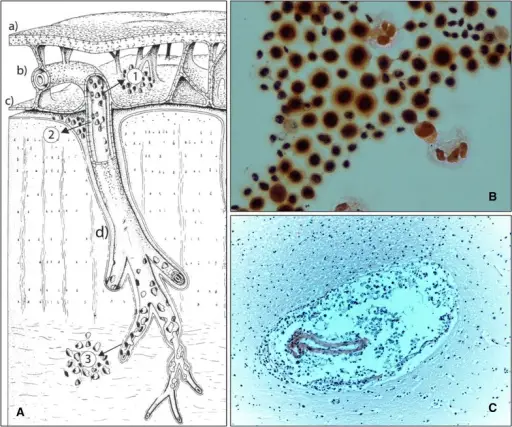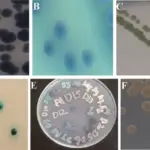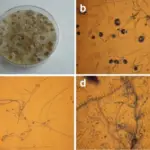Cryptococcosis fungal Infection is an infection caused by the fungus Cryptococcus neoformans or Cryptococcus gattii.
What is the Pathology of Cryptococcosis Fungal Infection?
The pathology of cryptococcosis fungal infection is:
-Etiology: The cause of cryptococcosis fungal infection is a fungus known as Cryptococcus neoformans.
-Genes involved: Not applicable.
-Pathogenesis: The sequence of events that lead to cryptococcosis fungal infection are: after inhalation, the yeast spores are deposited into the pulmonary alveoli, where they survive the neutral-to-alkaline pH and physiologic concentrations of carbon dioxide and then are phagocytized by alveolar macrophages but if not they may form cystic cluster
-Morphology: The morphology associated with cryptococcosis fungal infection shows an encapsulated, environmental yeast. Cryptococcus neoformans is a round or oval yeast measuring 4–6 µm in diameter, surrounded by a capsule that can be up to 30 µm thick
-Histology: The histology associated with cryptococcosis fungal infection shows yeast cell proliferation with a histiocytic response.
How does Cryptococcosis Fungal Infection Present?
Patients with cryptococcosis fungal infection typically are all genders of all ages. The symptoms, features, and clinical findings associated with cryptococcosis fungal infection include fatigue, fever, excessive sweating, nausea, blurred or double vision, dry cough, headache, and chest pain.
How is Cryptococcosis Fungal Infection Diagnosed?
Cryptococcosis fungal infection is diagnosed by Chest x-ray, urine collection, and lumbar puncture.
How is Cryptococcosis Fungal Infection Treated?
Cryptococcosis fungal infection is treated by medications amphotericin B, flucytosine, Fluconazole.
What is the Prognosis of Cryptococcosis Fungal Infection?
The prognosis of cryptococcosis fungal infection is fair. The type of treatment and prognosis usually depends on the severity of the infection and the parts of the body that are affected.



